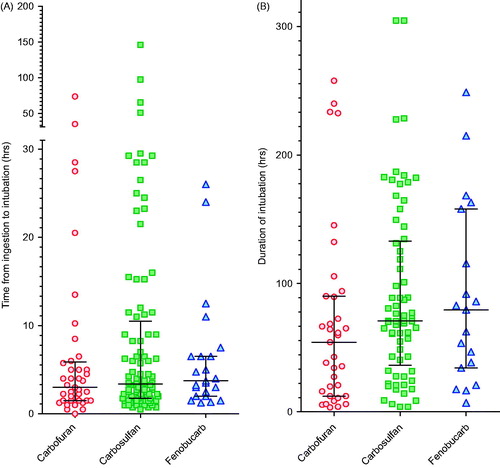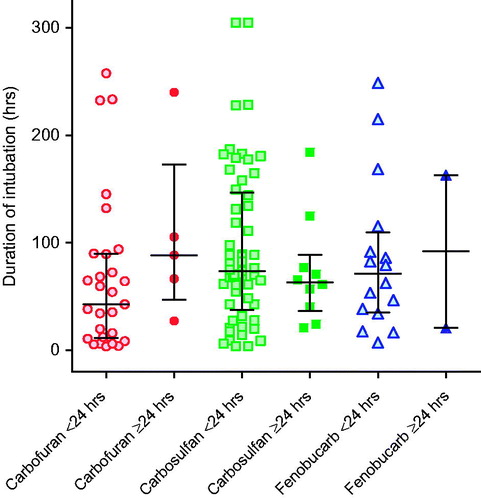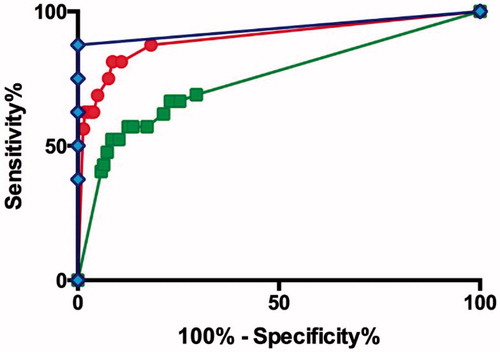Figures & data
Table 1. Characteristics of the three carbamate insecticides.
Table 2. Demographic and admission characteristics following carbamate self-poisoning.
Table 3. Outcomes following admission to hospital with carbamate insecticide self-poisoning.
Figure 2. Time to (A) first intubation and (B) for survivors, duration of intubation, according to carbamate ingested. There was little difference in time to intubation and duration of intubation between pesticides. The majority of patients were intubated between 0.5 and 5 h post-ingestion; nearly all were intubated within 48 h. Patients intubated after 48 h were typically intubated for worsening pneumonia and not for peripheral neuromuscular failure as noted after OP insecticide poisoning. Bars show the median (IQR) time.

Figure 3. Time between ingestion and death for patients poisoned by the three carbamates. Paired times of ingestion and death were available for 15/16 carbofuran, 38/43 carbosulfan, and 8/8 fenobucarb fatal cases. Bars show the median (IQR) time.

Figure 4. Comparison of time to first intubation with need for ventilation. Patients intubated within 24 h of admission did not show a shorter duration of intubation compared to patients intubated after 24 h. Bars show the median (IQR) time.

Figure 5. Receiver operated curve analysis for the carbamates. Blue diamonds: fenobucarb; red circles: carbofuran; green squares: carbosulfan.

Figure 6. Rat oral toxicity (LD50) and octanol/water solubility (log Kow) for the three carbamates, compared to all carbamates and all OP insecticides. Data on rat oral toxicity were taken from the WHO Classification of Pesticides; data on log Kow from NLM TOXNET. The three WHO Class II OP insecticides most closely studied in these same hospitals [Citation16] are also indicated.
![Figure 6. Rat oral toxicity (LD50) and octanol/water solubility (log Kow) for the three carbamates, compared to all carbamates and all OP insecticides. Data on rat oral toxicity were taken from the WHO Classification of Pesticides; data on log Kow from NLM TOXNET. The three WHO Class II OP insecticides most closely studied in these same hospitals [Citation16] are also indicated.](/cms/asset/87cbf355-1134-4b7f-83b0-41190bcebcfd/ictx_a_1187735_f0006_c.jpg)

